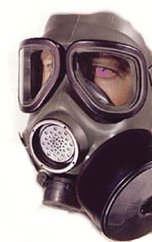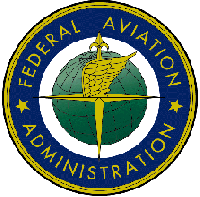AFL-CIO Pushes for Expanded OSHA Control
 Patricia
Friend, International President of the Association of Flight
Attendants, AFL-CIO, has testified this week before the House
Transportation and Infrastructure committee to expose the health
effects of toxic cabin air in the aircraft cabin.
Patricia
Friend, International President of the Association of Flight
Attendants, AFL-CIO, has testified this week before the House
Transportation and Infrastructure committee to expose the health
effects of toxic cabin air in the aircraft cabin.
While the SARS scare has generated heightened interest in cabin
air quality, the virus is not the only cause for serious concern
with the quality of aircraft air. The heavy use of recirculated
air, fumes from heated engine oils and hydraulic fluid and the use
of hazardous pesticides in the cabin can lead to serious
debilitating illnesses for crew members and passengers.
 Many of the health concerns created by aircraft
air quality problems could be more easily addressed if flight
attendants had OSHA protections. Because of the specialized
requirements of aircraft, the Federal Aviation Administration has
sole jurisdiction over health and safety in the aircraft cabin,
with an injury and illness rate (calculated by days away from work
data) of 8 percent, more than four times higher than the national
average. [Note: common injuries, such as ankle problems created by
turbulence; and other injuries caused by the unique aircraft
environemnt, often take workers out of work for extended periods;
and such injuries (not related to air quality) are included in the
figures --ed.]
Many of the health concerns created by aircraft
air quality problems could be more easily addressed if flight
attendants had OSHA protections. Because of the specialized
requirements of aircraft, the Federal Aviation Administration has
sole jurisdiction over health and safety in the aircraft cabin,
with an injury and illness rate (calculated by days away from work
data) of 8 percent, more than four times higher than the national
average. [Note: common injuries, such as ankle problems created by
turbulence; and other injuries caused by the unique aircraft
environemnt, often take workers out of work for extended periods;
and such injuries (not related to air quality) are included in the
figures --ed.]
Excerpts from Friend's testimony can be found below.
It is most unfortunate that it takes the proverbial slap in the
face to bring attention to an issue that affects hundreds of
millions of people. Cabin air quality issues have been a concern to
the 50,000 members I represent for decades. While some on this
Committee have been active on this issue, it still has not been
properly addressed. SARS has thrust the issue of cabin air quality
into the headlines and tragically, many have died, including flight
attendants. In reality, SARS is not the greatest health risk
associated with cabin air quality.
Many more severe health risks exist in the cabin environment.
Passengers and crew persistently report incidents involving
exposure to carbon monoxide, to neurotoxins, and to ozone gas ...
each one delivered to the cabin in its air supply, largely as a
result of the airlines' shoddy maintenance practices. The results
of these exposures vary in their level of seriousness. Respiratory
diseases, nausea, dizziness, muscle tremors, nervous system damage
and memory loss are just a few illnesses reported by flight
attendants and are consistent with exposure to the aforementioned
chemicals.
Push for OSHA diktats to supplement FAA's
 A
serious part of the problem is that the aircraft cabin is a unique
workplace and not governed by any effective or enforceable air
quality standard. People in most office buildings, factories and
malls have workplace protections afforded them by OSHA. Flight
attendants do not. Instead, we have been relegated to breathe air
and work in an oxygen-poor environment containing exhaust fumes,
heated lubricants and hydraulic fluids, antifreeze and pesticides.
This is the predictable result of the FAA, which lacks significant
experience and knowledge of workplace safety issues, claiming
exclusive jurisdiction over occupational safety and health in the
aircraft cabin. The Supreme Court recently ruled 8-0 that mere
possession of unexercised regulatory authority over certain working
conditions is insufficient to displace OSHA's jurisdiction. The
opinion also stated that an agency's minimal exercise of authority
does not result in pre-emption of OSHA jurisdiction. I ask this
Committee to make the necessary legislative changes to address this
pervasive problem.
A
serious part of the problem is that the aircraft cabin is a unique
workplace and not governed by any effective or enforceable air
quality standard. People in most office buildings, factories and
malls have workplace protections afforded them by OSHA. Flight
attendants do not. Instead, we have been relegated to breathe air
and work in an oxygen-poor environment containing exhaust fumes,
heated lubricants and hydraulic fluids, antifreeze and pesticides.
This is the predictable result of the FAA, which lacks significant
experience and knowledge of workplace safety issues, claiming
exclusive jurisdiction over occupational safety and health in the
aircraft cabin. The Supreme Court recently ruled 8-0 that mere
possession of unexercised regulatory authority over certain working
conditions is insufficient to displace OSHA's jurisdiction. The
opinion also stated that an agency's minimal exercise of authority
does not result in pre-emption of OSHA jurisdiction. I ask this
Committee to make the necessary legislative changes to address this
pervasive problem.
Standard 62: why city buses smell better than airliners,
inside
 The
ventilation standard recommended for most indoor environments,
including transportation vehicles by the American Society of
Heating Refrigerating and Air Conditioning Engineers (ASHRAE) is 15
cubic feet per minute per person of outside air. This is called
Standard 62. To paraphrase ASHRAE, Standard 62 is the result of
hundreds of health-based studies of buildings. Investigators
reported a reduction in symptoms when 15 cubic feet per minute --
or more -- of outside air is provided. Building codes usually
require owners to adhere to Standard 62 at a minimum. Unlike
airlines, they do not have the option to reduce the ventilation
rate to save on heating or cooling costs. The only requirement that
airlines must follow is to maintain cabin pressure, which
translates to about 3 cubic feet per minute to each occupant.
[Outside air at altitude is often a lot cleaner than outside air at
ground level in cities; perhaps there is equal health benefit to
fewer changes -- of cleaner air. --ed.]
The
ventilation standard recommended for most indoor environments,
including transportation vehicles by the American Society of
Heating Refrigerating and Air Conditioning Engineers (ASHRAE) is 15
cubic feet per minute per person of outside air. This is called
Standard 62. To paraphrase ASHRAE, Standard 62 is the result of
hundreds of health-based studies of buildings. Investigators
reported a reduction in symptoms when 15 cubic feet per minute --
or more -- of outside air is provided. Building codes usually
require owners to adhere to Standard 62 at a minimum. Unlike
airlines, they do not have the option to reduce the ventilation
rate to save on heating or cooling costs. The only requirement that
airlines must follow is to maintain cabin pressure, which
translates to about 3 cubic feet per minute to each occupant.
[Outside air at altitude is often a lot cleaner than outside air at
ground level in cities; perhaps there is equal health benefit to
fewer changes -- of cleaner air. --ed.]
If it's so cheap and so important, a clever airliner marketer
would join in urging adoption, to gain a competitive edge.
AFA members fought alongside our employers to ask Congress for
financial relief from unfunded mandates. Nobody benefits if our
employer files for bankruptcy. However, I feel it is my obligation
to inform this Committee that the cost for an airline to comply
with Standard 62 is roughly 12 cents per passenger per hour of
flight. The airlines only view this as increased fuel costs. I urge
this Committee to look at this as a health issue for all who fly
frequently, especially those that work in the aircraft cabin, and
ask you to examine the costs incurred by individuals, health
insurance companies and the federal government that result from
this obscenely low "standard" employed by airlines.
The previous testimony outlines our concerns over ventilation
standards in a most rudimentary manner. My written testimony
identifies six other areas of concern with cabin air quality that
the necessary time constraints will not allow me to address orally
today. I would however like to talk about pesticides and
contaminants in the aircraft cabin briefly.
If it can kill a roach, what will it do a person?
 Twelve
countries, including Australia, New Zealand and India require the
spraying of pesticides within all parts of the aircraft cabin on
all arriving and departing flights. In some cases, flight
attendants are required to spray pesticides over the passengers
during a flight. Other countries allow the cabin to be soaked with
pesticides shortly before crew and passengers board. In some cases,
the cabin is still wet with spray. And the flight attendants must
work in this environment flight after flight, or risk either
discipline or a pay cut. There are numerous reports of severe
chemical burns on the skin, throat closure and nerve damage.
Another concern is the potential effect of these pesticides on
pregnant mothers and their unborn children. [Ms. Friend did not
have time to explain the statistically increased illness
incidence, if any, directly caused by such practices in foreign
countries --ed.]
Twelve
countries, including Australia, New Zealand and India require the
spraying of pesticides within all parts of the aircraft cabin on
all arriving and departing flights. In some cases, flight
attendants are required to spray pesticides over the passengers
during a flight. Other countries allow the cabin to be soaked with
pesticides shortly before crew and passengers board. In some cases,
the cabin is still wet with spray. And the flight attendants must
work in this environment flight after flight, or risk either
discipline or a pay cut. There are numerous reports of severe
chemical burns on the skin, throat closure and nerve damage.
Another concern is the potential effect of these pesticides on
pregnant mothers and their unborn children. [Ms. Friend did not
have time to explain the statistically increased illness
incidence, if any, directly caused by such practices in foreign
countries --ed.]
Additional outside air would bring in more petrochemicals, if
poor maintenance practices continue to be followed.
Another serious problem with cabin air is the possibility of
various dangerous chemicals entering the cabin. Engine oils,
hydraulic fluids and deicing solutions can leak or spill into the
aircraft engines and the auxiliary power unit. As outside air is
compressed in the aircraft engines, these oils and fluids are
heated to high temperatures. Some of these byproducts contain
neurotoxins that have a similar effect as those that we're looking
for in the Iraqi weapons program. Hundreds of reports cite smoke,
mists or odors in the aircraft cabin while in flight. The symptoms
described by those on board range from headache and dizziness to
memory loss and seizures. These symptoms are consistent with
inhalation of these dangerous chemicals. I ask this Committee to
please accept the submission of a first hand account by one of our
members that provides detailed documentation of the problems with
cabin air quality.
The entire report is available in the union's website.
 Aero-News: Quote of the Day (12.11.25)
Aero-News: Quote of the Day (12.11.25) ANN's Daily Aero-Term (12.11.25): Nonradar Arrival
ANN's Daily Aero-Term (12.11.25): Nonradar Arrival Classic Aero-TV: David Uhl and the Lofty Art of Aircraft Portraiture
Classic Aero-TV: David Uhl and the Lofty Art of Aircraft Portraiture Airborne-NextGen 12.09.25: Amazon Crash, China Rocket Accident, UAV Black Hawk
Airborne-NextGen 12.09.25: Amazon Crash, China Rocket Accident, UAV Black Hawk Airborne 12.05.25: Thunderbird Ejects, Lost Air india 737, Dynon Update
Airborne 12.05.25: Thunderbird Ejects, Lost Air india 737, Dynon Update







